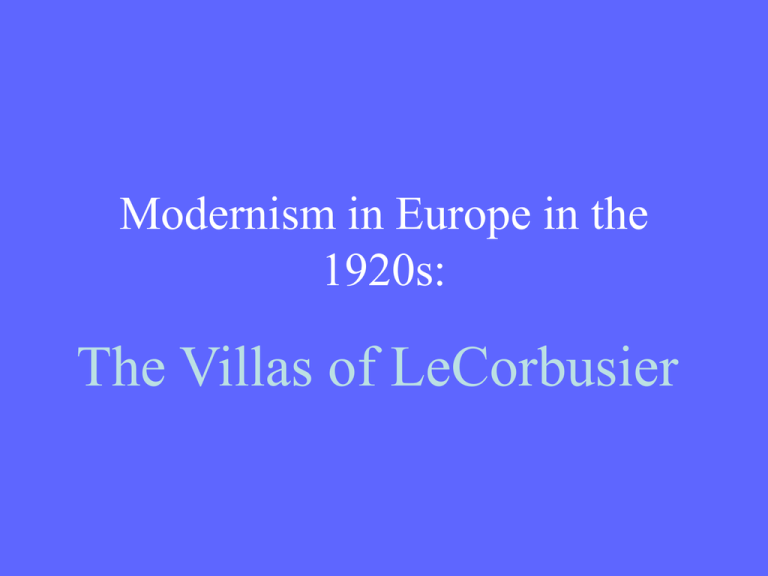EarlyCorbusier
advertisement

Modernism in Europe in the 1920s: The Villas of LeCorbusier La Maison Citrohan (1922) Project (“Citrohan” sounds like “Citroen” in French). This design was intended to be as efficient as that of a Citroen automobile. Model Drawings This arrangement of spaces became a signature treatment in LeCorbusier’s housing projects. Paris, House and Studio for Amedee Ozenfant, 1923 Garches, Villa Stein, 1926 Villa Stein, Garden Facade Villa Stein, regulating lines underlying the composition of the facades. Villa Savoye (“Les heures claires”), Poissy-sur-Seine, 1928-30 The Villa Savoye is one of the classic achievements of European modernism in the abstract/functionalist category. Designed by LeCorbusier for a wealthy Parisian family, the villa was one of the first in which he embodied his philosophical and aesthetic ideas about architecture most adroitly. The nickname of the villa--”Les heures claires”--is probably a pun. In French this term refers to leisure time (lit. “clear hours”), but it also contains the notion of clearing one’s head and of purifying one’s thought processes. The villa was originally suburban and in the middle of fields. The approach to it by car and then the movement through it on foot were carefully calculated to produce a series of experiences that were not only memorable but thought-provoking. Beginning with the approach, one sees the villa as a “machine in the garden.” It is clearly a human production, unconfusable with nature. The villa is in essence a simple volume lifted on columns above the ground. While this idea is rooted in the “Dom-ino” house, it moves well beyond the basic notion to explore a subtle shift in the column grid as well as the enclosure of part of the ground floor space and the use of ramps as well as a variety of stairs to move from level to level. The columns also shift from round to square cross-section where the grid changes on the interior. The ramp became an important theme of modernism, not because it was invented here but because its purpose and disposition in this design is so well conceived. The ramp is a subtle spatial experience that takes the observer from the darker lower level to the more brightly illuminated main floor and then on up to the completely exposed roof garden. The climax of the procession up the ramps occurs when the house, first seen in the midst of nature (the “machine in the garden”), turns out to enframe a view of nature through the window opening in the wind screen.











